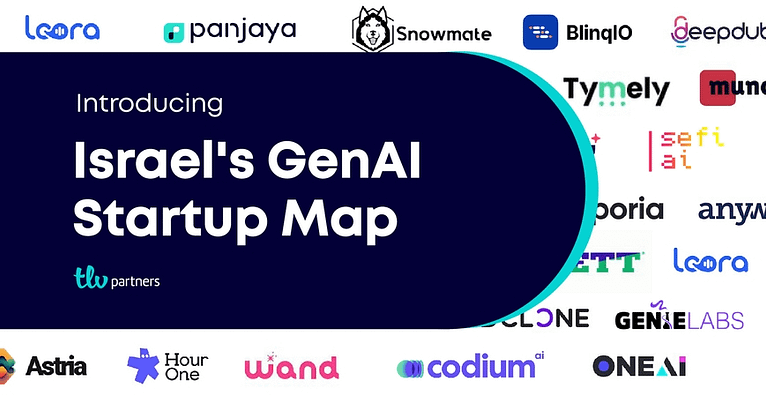The Generative AI wave is in full swing and it feels like not an hour goes by without a new product launch announcement from one of the tech giants or one of the foundation model upstarts.
Just play around with ChatGPT, Bard or Midjourney and the hype is quite easily understood. Spend a few minutes speaking to founders or operators of companies that have existing products in the market, and after hearing about all the various ways that they are leveraging these tools or some of the open source LLMs in production – and all of a sudden the hype doesn’t seem quite hyped enough.
So it’s no surprise that early-stage founders are flocking to the space to start “GenAI native” companies.
Yes, this very well may be the start of another platform shift, similar to what we witnessed with mobile and cloud. However, along with optimism comes some difficult questions.
- What type of founders are best suited to take advantage of this shift?
- Where will the value accrue?
- What do moats look like in a world with democratized AI tools? (For an interesting listen on precisely this topic, check out a recent episode of The Acquired podcast)
- Can the incumbents be out-innovated?
While these are all valid questions, many of them are simply unanswerable. At least for now. Of course, that hasn’t prevented many (most?) of my VC peers from opining about the supposedly clear answers to these questions.
But I will readily admit that I am stumped.
That being said, there is one area I feel confident is about to see a boon due to the proliferation of Generative AI tools. And that area is vertical saas.
Vertical saas isn’t anything new. The quick description of vertical software companies is any company that builds purpose built software for a specific industry. There have been plenty of great breakdowns on the appeal of vertical software from an investor point of view.
The basic idea is that while vertical saas companies might have smaller market sizes due to fewer total number of customers, a company that builds a solution tailored for a specific vertical can attain a higher percentage of market share than their horizontal saas counterparts.
For anyone interested in reading more about the overall appeal of vertical saas, I highly recommend the following pieces from Bessemer, Bain, Index, and a16z.
Generative Vertical SaaS
I believe that some of the biggest winners of this new area of AI will be vertical saas companies for the simple reason that the questions outlined above have clear-cut answers to them when it comes to vertical software. Let’s take a look:
What type of founders are best suited to take advantage of this shift?
The first and obvious characteristic are founders that come with domain expertise and experienced the pain of their target vertical firsthand.
But a new trend I expect to see more often in the coming years are non-technical founding teams succeeding in vertical markets.
Traditional startup wisdom states that a founding team needs CTO. Common sense states that an AI company would need not only a CTO but a particularly experienced CTO.
While we may not quite be there yet, I believe that the current progress and performance of LLMs and other Generative AI models will enable non-technical teams to get a high-performing product to market faster than ever before.
This isn’t to say that companies won’t have R&D teams, but rather that the pool of potential founders is going to be increased dramatically and no longer be limited to individuals with a computer science background or people who know others with such a background.
Where will the value accrue?
Quickly expanding on the above question, every technical platform shift has two distinct layers: the infrastructure layer and the application layer.
Take cloud computing as an example – the infrastructure winners (AWS, Azure and GCP) captured an incredible amount of value, but the market played out in an oligopolistic manner. Whereas the application layer was much more distributed and arguably created even more value (Stripe, Twilio, Stripe, Uber, Airbnb, etc…). In hindsight, investing in the application layer was the correct decision.
Now back to our topic – all vertical saas companies share one thing in common: a deep understanding of their end customer. To that end, vertical saas platforms often take the form of a holistic management portal, or of an end-to-end “business in a box” for their customers (see Mindbody, Slice, and others).
In these cases, value accrues to the vertical saas vendor because they provide the entire stack (both the infrastructure layer and application layer) for their customers. While they often do not develop the infrastructure layer themselves, they package it into their offering and bake it into the costs.
What do moats look like in a world with democratized AI tools?
The value of vertical software tools doesn’t reside in their technology, but rather in their deep knowledge of the pain and the robustness of the product offering as a result of their deep knowledge.
This is something that, by definition, will never be democratized. Furthermore, businesses like this will always be able to benefit from simply integrating the best off the shelf technology available in order to enhance their offering. In this case – Generative AI.
If executed correctly, Generative AI tools should further strengthen such companies’ moat, not infringe upon it.
Can the incumbents be out-innovated?
Finally, the question of incumbents when it comes to AI refers to the tech giants: Google, Microsoft, Meta and Apple – and interestingly enough to OpenAI.
It’s hard for me to imagine any of these companies going deep into vertical application development, as that’s simply not their model. Therefore, while the “why can’t Google do this” – which is usually a lazy VC question but I think actually is quite legitimate when it comes to Generative AI – is simply irrelevant.
Introducing FisherAI
To illustrate the type of companies that I expect to succeed in this Generative Vertical SaaS category I’ve come up with an example: FisherAI
A quick search on Bard informed me that there are approximately 38 million commercial fishermen in the world. Most of them are family owned businesses and have been around for generations.
Now, I have absolutely no understanding of what these businesses look like, but I would imagine that they have a few challenging aspects of their business (other than, you know, actually catching the fish):
- Equipment: source, purchase and maintain expensive equipment such as their vessel, nets, other trappings and cooling tanks
- Sales: develop and maintain relationships with various retailers, wholesalers or consumers who purchase their catch
- Environmental: weather monitoring, environmental regulation compliance
Another quick Bard search informed me that many of these businesses still operate their day-to-day on pen and paper or legacy ERPs in the best cast. This is a classic vertical SaaS opportunity. (I would be remiss if I didn’t at least mention the potential fintech opportunities here).
Until today, starting a company like this would have required either a “typical” tech founder spending at least a year researching the seafood industry or a tech-forward fisherman to begin a search for technical co-founders.
Imagine though, that now with democratization of basic software development, any fisherman could spin-up a workable MVP of this product quite quickly. Would the tech be defensible? No – but as discussed above, the moat for businesses like this is the deep knowledge of the problem space, something that our newly minted tech founder fisherman has a wealth of.
Conclusion
Whether or not FisherAI ever manifests, I look forward to meeting founders passionate about solving niche problems based on their domain expertise – and I fully expect them to leverage Generative AI in order to do so most efficiently.






